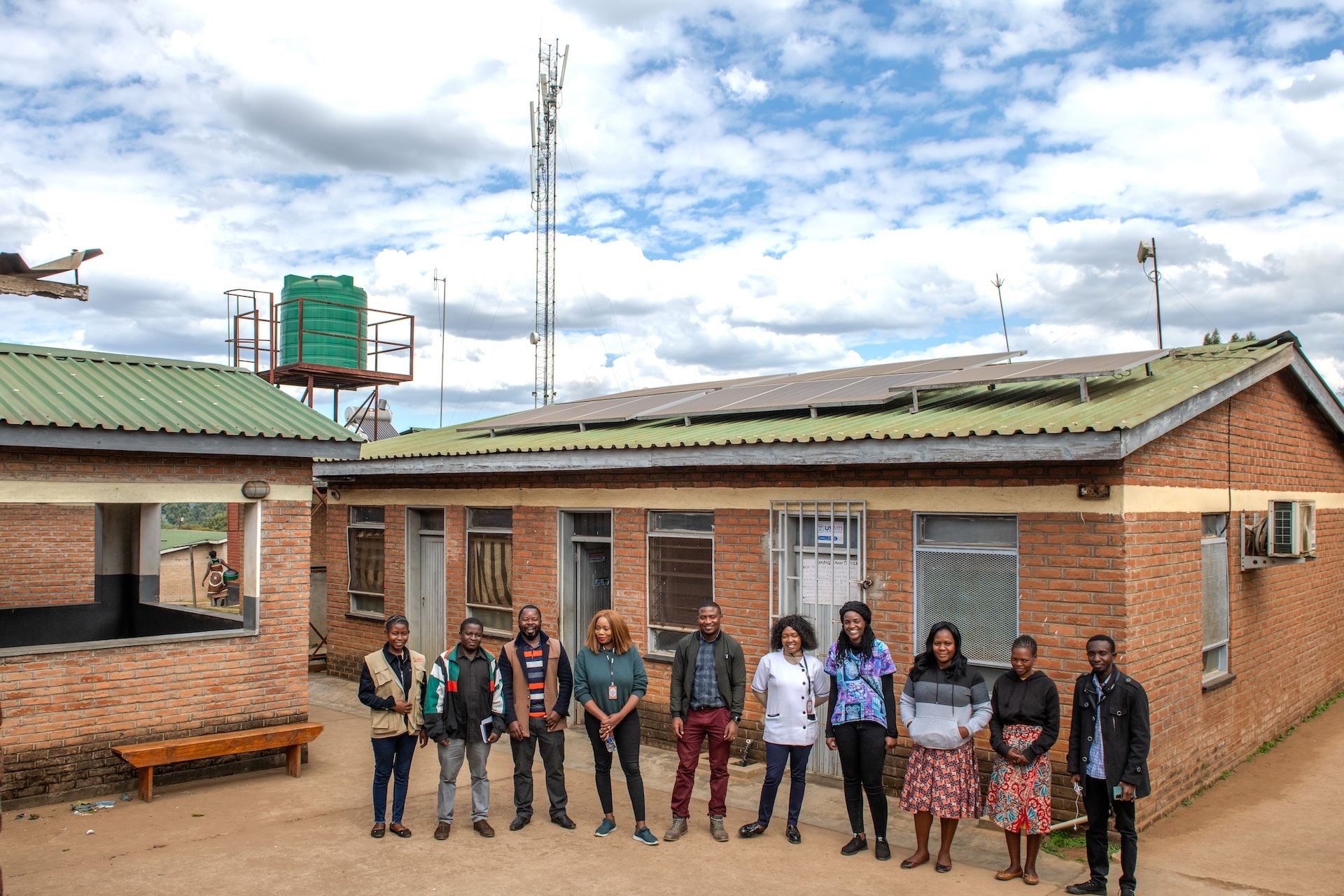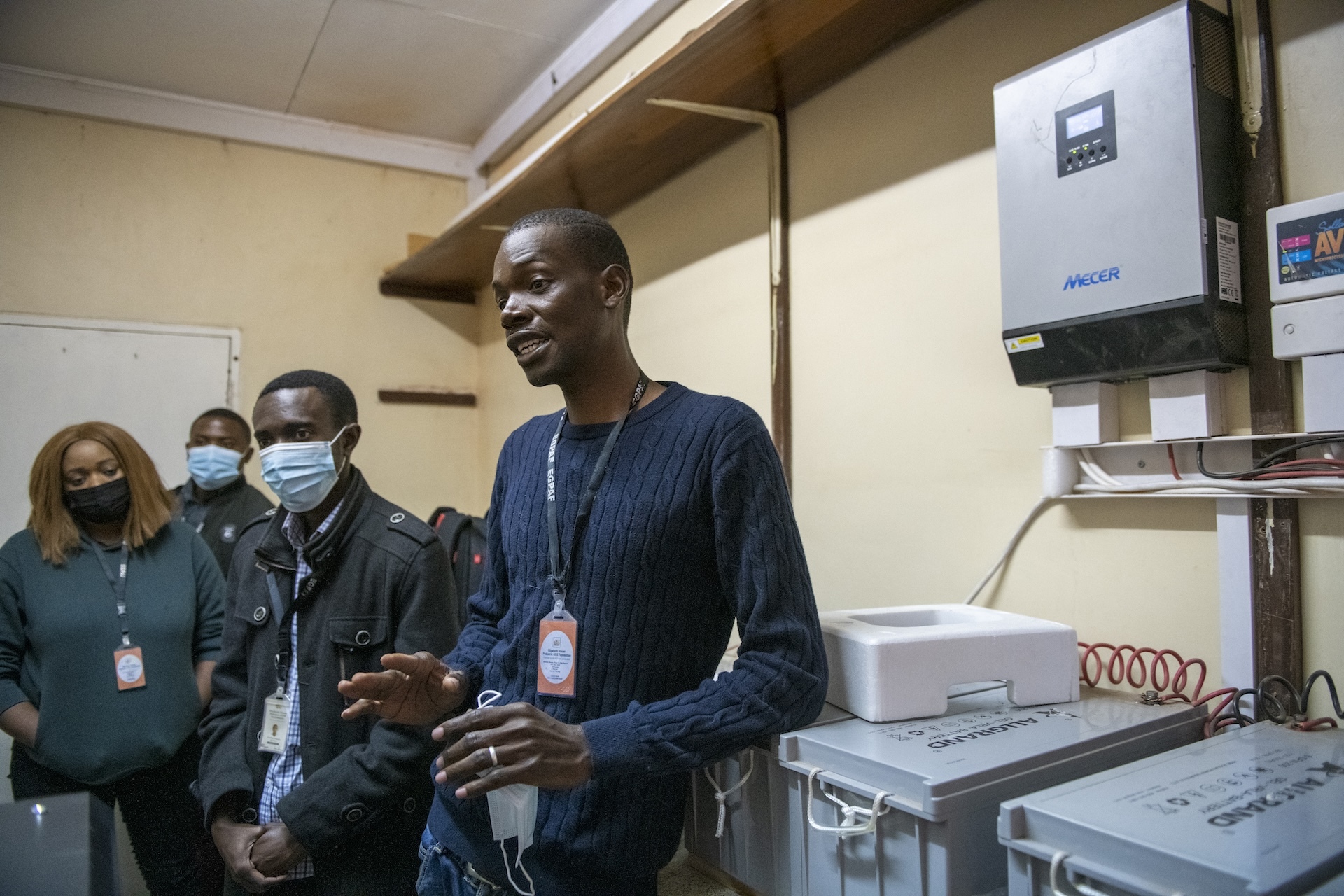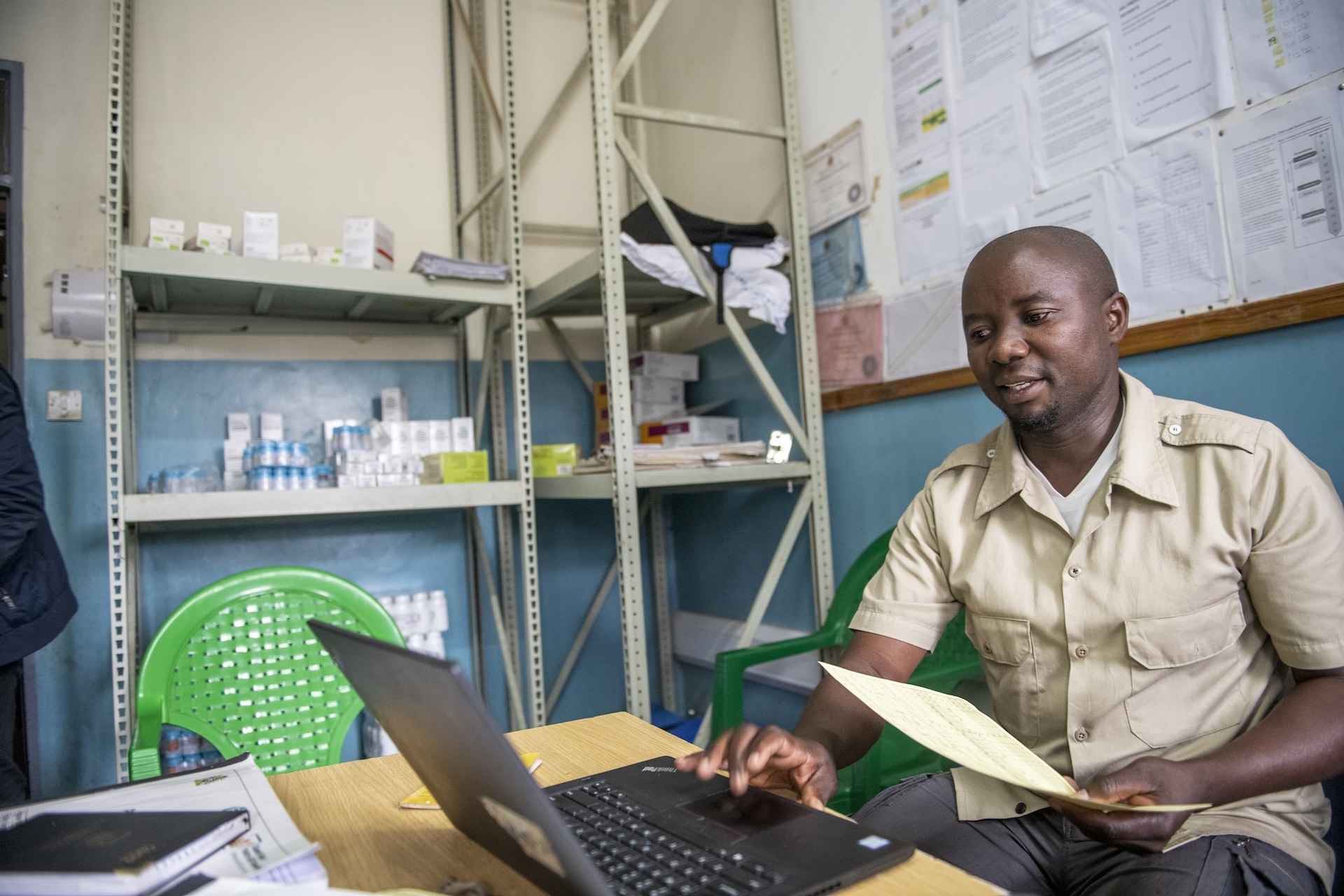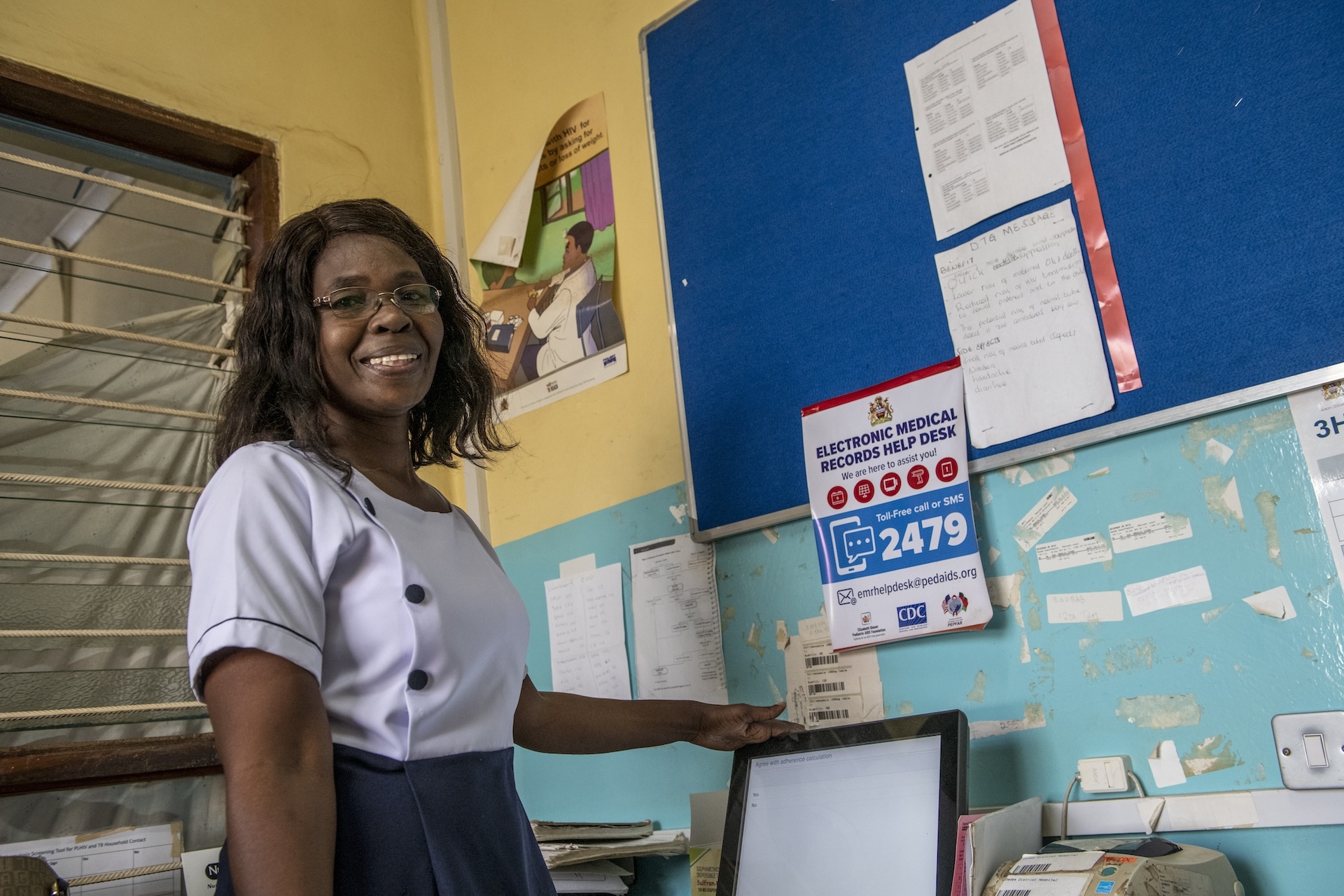As EGPAF began the process of building out the electronic medical records system, they faced two major challenges; bandwidth and electricity.
“Apart from the EMR, we had to also look at infrastructure and the network,” says Charlie Maere, the Global Digital Health and Data Analytics director at EGPAF.
Power to the Health Workers

Information may be power, but an electronic system also requires power to function. In a region plagued by periodic power outages—not to mention the high likelihood of sections of the grid going down in a weather disaster—keeping electricity flowing is vital.
EGPAF has been mitigating disruptions to the electrical grid by installing solar hybrid solutions at health facilities and district registration offices. Solar panels provide the primary electricity to the sectors of the health centers that are using the EMRS. The panels provide electricity while there is sunlight while simultaneously storing energy in batteries for when there is no sunlight.

The solar panels are the primary source of electricity. In other words, if for some reason the solar panels were to not be operational for some reason, the existing power grid would be there. But the plan is to keep the system running on the renewable and free resource of the sun, which reliably shows up every morning.
“It doesn’t matter whether it’s dark or it’s daytime, health workers have power at their fingertips, using the system that we have put in place,” says Eckharie Beulah, senior engineer of infrastructure.
Adding Lanes to the Information Superhighway

EGPAF’s other main infrastructure focus has been to ensure that the data keeps flowing into the data lake. Under the old paper system, data was vulnerable and local. A natural disaster could easily destroy many or all the records at a facility.
Thus, EGPAF has invested in site-level local area networks (LAN) and above site-level through a wide area network (WAN), allowing for real-time connectivity within sites, across systems, and across locations. In partnership with Telecom Networks Malawi and AIRTEL, EGPAF provides virtual private network (VPN) connections to all clinics and labs, allowing for real-time transfer and back up of data.
Thus, when a clinician adds a lab request during a patient visit, it is immediately available both at the lab and within the central database.

When a system does fail, it is important that clinic and lab staff have support to fix the problem. EGPAF has developed the National Helpdesk, reachable by a toll-free number, email, and self-service (via a system portal). The helpdesk aims for a quick response time to standard site issues, ensuring no more than 24 hours of downtime.
For those facilities not yet fully connected to the internet, an e-mastercard system has been implemented. It is a version of the full electronic medical record system, but it collects the data on a local server, which is also backed up on the SIM card in the laptop. The records must be collected periodically by visiting health officers who download them and add them to the national data lake.
As internet access expands across Malawi, facilities now using the e-mastercard system will move to the touchscreen model.



